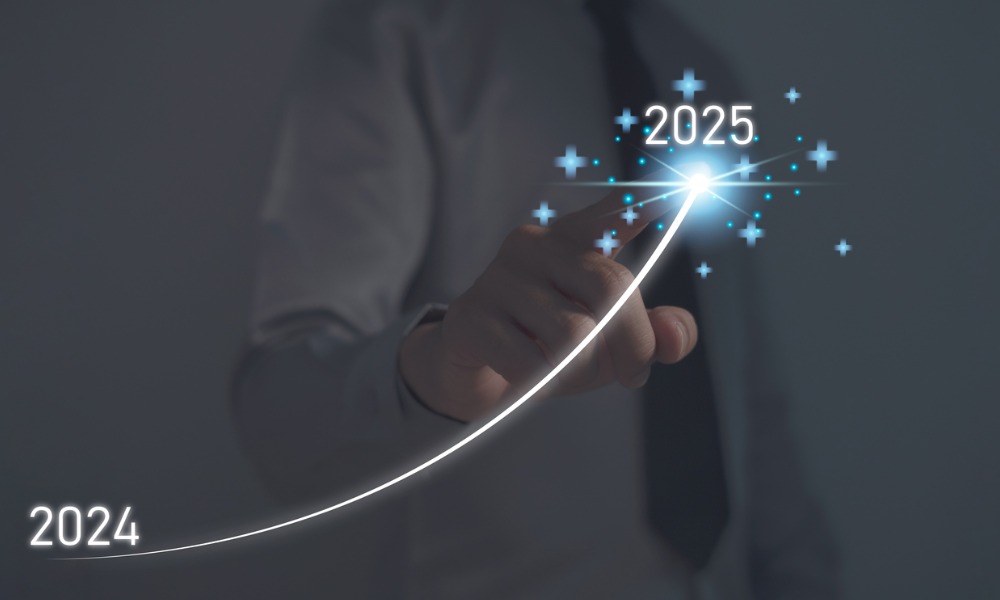In remarks at CPBI, senior advisor in disability management for Desjardins Insurance outlined a number of trends that plan sponsors need to be aware of

Plan sponsors might be forgiven for feeling some whiplash. Since the onset of the pandemic the pace of change — demographic, financial, social — has seemed to only ratchet up. In the midst of managing an endless string of unprecedented events, it can be challenging to lift one’s eyes and take a look at the future of work.
At the recent Canadian Pension & Benefits Institute (CPBI) Forum in Ottawa Charmaine Alexander gave plan sponsors a preview into what the future of work will look like. The Senior Advisor in Disability Management at Desjardins Insurance looked at the ways society is changing now and how those changes are impacting the working world. From demographics to technology trends, AI and DEI.
“We live in a very fast-paced world, we’re constantly bombarded with emails, texts, and stimulus,” Alexander said. “But we need to take some time and look at what’s going to happen in the future. We need to strategize.”
Alexander highlighted that the view of the world as constantly changing isn’t particularly new. The ancient Greek philosopher Heraclitus, who lived between the 6th and 5th centuries BCE, famously said that “the only constant in life is change.” Ancient words which Alexander posits still ring deeply true for plan sponsors today.
Changing of the guard
The first major change that Alexander highlighted was the shift in the dominant working generation. Millennials now outnumber baby boomers in the workforce. At the same time, however, the average working age is getting older as more baby boomers work longer. The population over aged 65 is now larger than the population under 18. By 2031 the entire baby boomer generation will be over 61. Retirements in Canada increased by 32 per cent in 2023. The generation that dominated Canadian workplaces for so long is on its way out and a new, smaller, generation is taking its place.
With that demographic change comes a broad shift in the way employees want to work. Painting with a relatively broad brush Alexander highlighted the different preferences that have been observed between generations. She says that baby boomers tend to prefer hierarchy, prioritize work, and believe in the organizations they work for. Gen X will work to live, but still prefer hierarchy and organization in the working lives.
Millennials, conversely, tend to work towards their own interests. They want organizations to make them proud and align with their values and interests. Gen Z, so far, has shown that work is a far lower priority for them than preceding generations. They know their value and want organizations to recognize that appropriately.
Alexander argues that organizations need to strive to meet all these different value sets to ensure employee attraction and retention.
What employees want
Flexibility has become a crucial component of employee desire and workplace offerings, according to Alexander. Employees want strong work life balances almost as much as they want good salaries. Among younger generations, particularly, there is a strong demand for work to remain flexible and serve whatever the overall shape of an employee’s life is. That could mean remote or hybrid work, offering ways for employees to buy or earn additional vacation, or offering ‘work from anywhere’ programs.
Four-day workweeks are also being explored by some companies in the US and Canada. Those trials have yielded impressive results, with employees feeling less tired, more satisfied, and equally productive. Alexander notes, however, that certain organizations may be unable to shift to that model simply because of the work they do.
Flexibility is not just a goal in working hours and location. Employees want flexible benefits and compensation, as well. In 2023 a la carte group plans became very popular. Plan sponsors will have to balance adequate coverage and risk pooling considerations with allowances for employee choice.
Health, Wellness, AI & DEI
One of the more glaring issues now facing employers, however, is the declining health of their employees. Since the pandemic Canadian life expectancy has declined slightly, substance abuse rates have grown, and overall feelings of good health have declined significantly. In managing health and wellness, Alexander advocates for a five-pillar approach.
That approach encompasses physical health, mental health, and financial health. It also includes environmental health, ensuring that people feel safe in their environment and workplace, and social health. Studies on isolation have found that a lack of social exposure can be worse for your health than smoking. Plan sponsors, Alexander argues, need to keep these aspects of health in mind.
One area that has introduced both opportunity and angst for organizations is the rise of AI. Alexander cites employee surveys which find that 57 per cent of employees are optimistic about AI while, at the same time, 61 per cent say that AI can pose a threat. Which means a significant number of Canadians hold both views of AI at the same time. As organizations adopt AI, Alexander says that transparency and education are key to managing those anxieties among employees.
DEI has also become a watchword of the working world. However, as Canada and Canadian workplaces become more diverse, employees are expecting more than just lip service. Organizations, Alexander argues, need to “walk the walk” with regards to DEI. Key to that work, Alexander says, is giving managers appropriate tools and skills to help ensure every employee feels recognized and included.
“The future is going to include a lot of upheaval and a lot of jobs will be changing, so it’s important to embrace and support workers,” Alexander says. “One of our new missions is to protect people and, as organizations, be authentic.”



